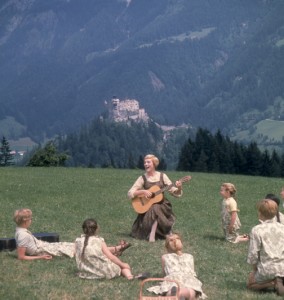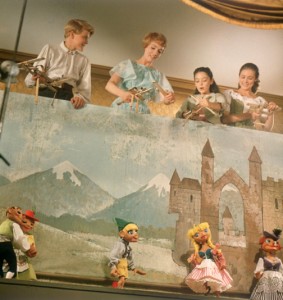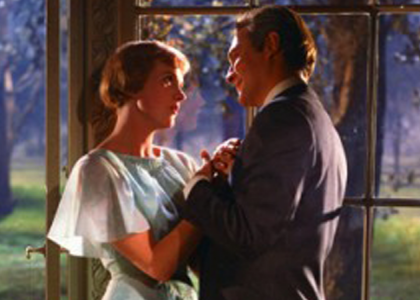Who doesn’t love The Sound of Music? Who? Introduce them to me and we’ll talk. Fifty years after it was released in theaters, this classic film about — well, you know what it’s about — was restored by Burbank’s Fotokem, home to one of the last feature film labs in the country. The studio completed the restoration of the 65mm musical through 8K scans from large-format film elements, downsampled to 4K for restoration and digital cinema mastering.
For the restoration of The Sound of Music, which was directed by Robert Wise and photographed by Ted D. McCord, ASC, Andrew Oran and his team began by creating the highest quality 65mm intermediate film components possible on the facility’s re-engineered 65mm contact printers. Next, those film elements were digitized at 8K on the 65mm Imagica scanner. FotoKem colorist Mark Griffith mastered the film from re-scaled 4K files, using digital tools to address quality issues present in the sourced material, such as flicker and variable color fading.

Mark Griffith
We decided to reach out to Griffith to find out more…
When Twentieth Century Fox came to you, what direction did they offer?
It was their intention to emulate film — even though the restoration process was in digital 4K, the final deliverable was a DCP and everything was done in the film color space. This gives the viewer an experience of what a restored film print would look like.
Did they want you to take some liberties based on what new technology was available?
We used the latest technology, but we used it gently. When I am at work on a restoration, I simply adopt a different mindset. Color tools that would be used for creative color in a new release are used as corrective tools in a restoration. In The Sound Of Music, our main task was to tackle anything that might be visually distracting, so I used windows and secondary correction with more of a corrective approach. In a way, a restoration is the ultimate visual effect. Every frame has an issue, and FotoKem’s role was to determine the best way to make it new again.
What did you use as a reference for what director Robert Wise and DP Ted McCord, ASC, intended?
We had a print that director Robert Wise had timed. However, time had taken its toll on the element. For example, the scene where Maria first meets the Von Trapp children was extremely red. It wasn’t a very flattering image. So during our remastering, I concentrated on balancing color and keeping the look natural and filmic.
We also referenced various other remastered versions — such as a previous DVD version and videotape elements of The Sound of Music — and the studio would comment on what they liked or didn’t like about each element. My role was to distill what was visually important.

How much of the film was damaged?
The film had an extensive amount of damage in the form of dirt, scratches and fading, and the color balance was inconsistent. I commonly had many different color corrections going on throughout a single shot. Adding to the challenge, each time we successfully solved an issue or refined an image a new visual challenge appeared. Frame by frame, we carefully determined the best way to make it new again.
What were some scenes that needed the most work?
At times, the first and last frame of every cut had a timing misfire. Some would ramp in or out with color and density shifts. It was a random problem that had a big visual impact. The opening titles were another area of challenge. Painstaking work was involved in solving the problem. The color breathing in the elements was awful and distracting. To fix this, I keyed the titles for independent control from the backgrounds and did single frame corrections to even out the density and color shifts of the foregrounds and backgrounds.
What are you most proud of with this restoration?
My proudest moment took place in a color review screening. In the night scene when Maria and Captain Von Trapp are dancing in the gazebo, I overheard someone say, “This is beautiful; I’ve never seen it look so good.” That was gratifying. The detail in the image was incredible. It’s a thrill to know how good this version is, and the enjoyment it will bring to people for a long time.

Can you talk about your process/workflow on this project?
I like to view the material as many times as possible. Each pass allows me to see something different and refine corrections. For me, it’s an on-going process of strategy discussions and screenings to get notes on what and how to trim, or notes about a version with clean-up work, and then to color and cut in the repair work.
What tools did you use?
For color, editorial updates and some VFX work, I used Quantel Pablo in 4K.
How long did the project take?
From first evaluation until final DCP screening, the project was in-house for approximately six months.
Thought Gallery Channel:
Creative Master Series
